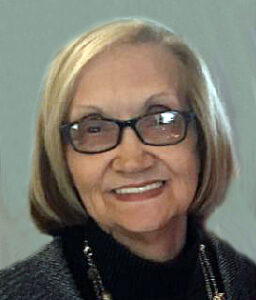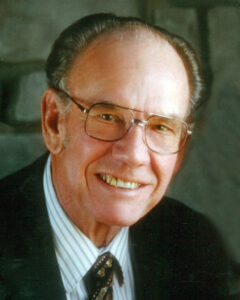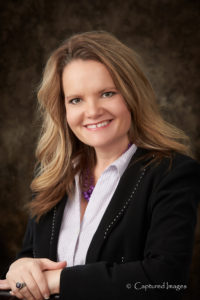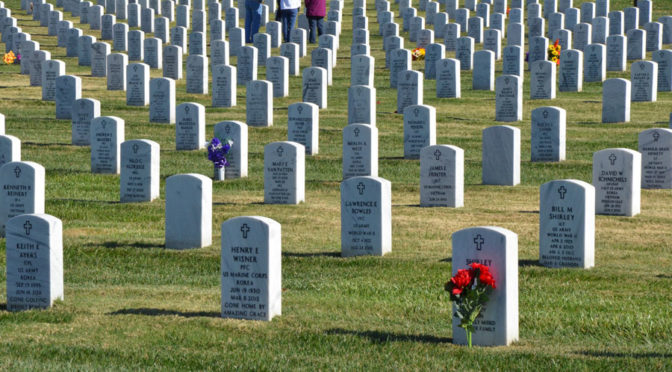Click below:
Monthly Archives: April 2020
We’re here for you, as always
|
|
| For almost as long as Kansas has existed, K-State Research and Extension has been here to help you and every other Kansan thrive.
In the middle of this current challenge, that mission remains unchanged. With offices in all 105 counties across Kansas, our promise has always been to provide relevant, science-based education and information to help you make decisions to maintain and improve your health, build and sustain businesses, grow your community, steward resources, feed the world, and raise the next generation of capable, responsible, thoughtful community leaders. While we remain steadfast in our commitment to that mission, we have had to adapt how we deliver to you during this time of public distancing. Kansas State University is on a limited-operation status. As of March 23, classes are being taught online, and most employees on campuses in Manhattan, Salina and Olathe have been working from home since well before Gov. Kelly’s statewide stay-at-home order. In accordance with guidance from the university and the State of Kansas, here’s how K-State Research and Extension is responding:
No matter where you live in Kansas, K-State Research and Extension is nearby – no matter the circumstances. We are a steady voice during trying times. Together, we can do this and will emerge stronger than ever. #inthistogether |
Carla Nemecek
Southwind Extension District
Director & Agent
[email protected]
620-365-2242
1 North Washington, Iola, KS 66749
Kansas COVID 19 Cases
The Kansas COVID 19 Cases can be viewed at:
The state cases for Bourbon County has not caught up with the latest data from SEK Multi-Health Department Data.
There are currently 7 cases in Bourbon County as of today.
Interim Guidance for Kansas Child Care Facilities
Important Things to Keep in Mind
•KDHE Child Care Licensing will not issue blanket exceptions to increase capacity or eliminate other health and safety requirements as part of the COVID-19 response. This includes issuing temporary licenses for an existing facility to operate in an alternate location. We await federal guidance on any waivers for requirements related to background checks and initial health and safety training.
•Existing child care facilities are required to continue to operate within the terms of their licenses and to comply with licensing laws and regulations.
•If a facility’s license is issued for a location that is closed (e.g. school, church, community center), the licensee cannot legally operate at an alternate location because the authorization to care for children only applies to location/address printed on the license
•In the absence of more restrictive guidance from either state or local health officials, new enrollment is permitted in accordance to the terms of the current license (ages of children, group sizes, total capacity, etc.). When enrolling new children, it is critical that health screening happens prior to entry and ongoing for all new and existing children.
NOTE: Screening and monitoring for signs and symptoms of illness have always been a part of maintaining a healthy and safe environment.
Screening should happen prior to entry and on an ongoing basis for all children and staff. Strong exclusion policies and increased sanitation is essential. These provisions are in place in order to prevent the spread of infectious disease.
•Consider prioritizing care to children of health care workers and first responders. If your facility has multiple classrooms/units consider creating a separate classrooms/units just for the children of health care workers and first responders. No additional screening or exclusion policies apply to health care workers’ children or to children living in counties with confirmed cases.•Let your local resource and referral know when you have vacancies and are able to care for children of health care workers and first responders.
•Facilities closing temporarily must submit a timely renewal application to ensure there is no gap in licensure and that the license remains in effect and valid.
•Specific licensing questions should be referred to your local licensing surveyor.For more information about local licensing contacts, visit our website at http://www.kdheks.gov/kidsnetand click on Local County Contacts (http://www.kdheks.gov/bcclr/download/county_contacts.pdf). Planning and Preparedness Recommendations for Licensed Child Care Facilities The most important thing that child care facilities can do now is to prepare for the possibility of community-level outbreaks.Licensees should take the followingsteps to help stop or slow the spread of respiratory diseases, including COVID-19:
•Stay informed and know where to go forthe most current information. Sources of accurate information include the CDC, KDHE,and your local county health department.
•Developor update emergency preparednessplans to address possible disruptions in learning and program operations. Your local licensing surveyor is available to provide technical assistance.
Determine how to deal with high absentee rates among children and staff.identify critical functions and positions and plan for alternative coverage in the event of staff absences or closure.identify methods to communicate with staff and parents in the event of closure
.•Review your policies for the exclusion of sick children and staff. Caring for Our Children, National Health and Safety Performance Standards (https://nrckids.org/CFOC) has information related to managing illnesses, including inclusion/exclusion guidelines. Established exclusion guidelines may need to be updated based on what is known about the symptoms and spread of COVID-19.oMake sure that parents of children in care and staff are aware and follow the policies.
Encourage parents to plan now in the event their child becomes sick. Sick children should not be taken to another child care program or another group setting, even temporarily.
oDevelop flexible sick leave policies that encourage staff to stay home when sick or when caring for sick family members.•Review children’s files and update health assessments and contact information.
•Develop a communication plan with parents and staff in the event of a COVID-19 case occurs in a staff or child.
•Make plans for the isolation and supervision of sick children until their parents can pick them up.
•Implement monitoring systems to track children and staff absences.oUnderstand the usual absenteeism patterns for your facility.oAlert your local health department about large increases in absenteeism due to respiratory illnesses.Recommendations for Preventingthe Introduction of COVID-19 INTO the FacilityPlease review the CDC’s Supplemental Guidance for Child Care Programs that Remain Openhttps://www.cdc.gov/coronavirus/2019-ncov/community/schools-childcare/guidance-for-childcare.html.
•Plan ahead to ensure adequate supplies to support hand hygiene behaviors and routine cleaning of objects and surfaces. If you have difficulty obtaining thesesupplies contact your local licensing surveyor and/or your local resource and referral agency.
•Post signs outside the entrance restricting entry to anyone with symptoms of illness/respiratory infection.
•Limit outside visitors. NOTE: This does not include the local licensing surveyor or necessary maintenance/repair worker. For those individuals, keep a log including date/time, name, and contact information (phone or email).
•Set up hand hygiene stations at the entrance so that individuals can clean their hands before entering. Keep hand sanitizer out of children’s reach and supervise use.
•Limit parents/guardians to one per child during drop-off and pick-up. Ideally, this should be the same individual each day.
•Work with parents/guardians to stagger drop-off and pick-up times to avoid overcrowding of children and parents/guardians in a confined spaces. If possible,greet parents at the door or outside.
•Screen children and staff daily before admittance for signs and symptoms of illness. Ask questions, observe for signs of illness,and check for fever. When checking temperatures, to the extent that you are able,do the following:oPerform hand hygiene.oWear personal protective equipment (mask, eye protection, gown/coveralls and a single pair of disposable gloves).oBe sure to use a fresh pair of gloves for each individual and that the thermometer is thoroughly cleaned in between each check. If disposable or non-contact thermometers are used and the screener did not have physical contact with an individual, gloves donot need to be changed before each check. In non-contact thermometers are used, they should be cleaned routinely as recommended by the CDC for infection control.
•Individuals who have a fever or other signs of illness should not be admitted.
•Exclude individuals with history of COVID-19 exposure, including travel within the last 14 days in a state, county or country identified as a hot spot for COVID-19,and those showing signs of illness.oChildren who are sick, with the typical reasons kids get sick (vomiting, rash, diarrhea, pink eye etc.) should be excluded in accordance with yourpolicies.oCurrent information about when individuals with symptoms consistent with COVID-19 should stay home is available on the COVID-19 Resource Center http://www.kdheks.gov/coronavirus/toolkit/COVID-19_Isolation_and_Quarantine_Guidance_and_FAQ.pdfand on the CDC website https://www.cdc.gov/coronavirus/2019-ncov/if-you-are-sick/steps-when-sick.html.
•Ensure frequent handwashing (https://www.cdc.gov/handwashing/index.html) and cough etiquette(coughing and sneezing into elbow).
•Meticulously follow diaper changing procedures. •Care for children in small stable groups. Children should be kept in the same group with the same provider/staff every day. Ideally, this means groups of the same 10or fewer children/staff, if/when possible.
•Facilities enrolling more than one group/unit are advised to maintain separate rooms for each group/unit. Adults, children, and staff assigned should try to remain in their designated rooms/units(avoid co-mingling or sharing space), including during drop-off/pick-up, indoor/outdoor activities, and mealtimes.
•Avoid over-crowded conditions. Encourage children to spread out during story and circle times.
•Allow as much room as possible between cribs, cots, and sleep mats. At least six feet is recommended. Place cribs, cots, and sleep mats so that children rest “head to toe” rather than “face to face”.
•Get plenty of fresh air. Children of all ages should have an opportunity for daily outdoor play, weather permitting. Indoor rooms should be well ventilated. To promote air circulation, open windows whenever weather permits or when children are out of the area.
•It is important to comfort crying, sad and/or anxious young children and they often need to be held. To protect themselves providers should consider
oWearing an oversized, button-down, long-sleeved shirt. Keep long hair up off the collar in a ponytail.oWashing their hands, neck and anywhere touched by a child’s secretions.oChanging the child’s clothing if secretions are on the child’s clothing. The provider should then change their button-down shirt, if there are secretions on it, and wash their hands again.
oPlacing contaminated clothes a plastic bag until washing it ina washing machine. Providers, like children in care, should have multiple changes of clothing on hand.
•Intensify cleaning and disinfection routines. Caring for Our Children, National Health and Safety Performance Standards(https://nrckids.org/CFOC) has nationally recognized standards for cleaning, sanitizing, and disinfection.
Routinely clean, sanitize, and disinfect surfaces and objects that are frequently touched, especially toys and games. This may also include cleaning objects/surfaces not ordinarily cleaned daily such as doorknobs, light switches, classroom sink handles, countertops, nap pads, desks, chairs, cubbies, and playground structures.
oUse the cleaners typically used at your facility. The CDC has detailed information at https://www.cdc.gov/coronavirus/2019-ncov/prepare/disinfecting-building-facility.html. A list of EPA products is available at https://www.epa.gov/pesticide-registration/list-n-disinfectants-use-against-sars-cov-2b. When choosing products be sure to read the label and carefully follow directions
.oPay special attention to cleaning and sanitizing toys.
▪Toys that can’t be cleaned and sanitized should not be used.
▪Set aside toys children have placed in their mouths or otherwise contaminated with bodily fluids until they have been cleaned and sanitized.
▪Machine washable toys should be used by one child at a time or should not be used at all. These toys should be laundered before being used by another child.
•Stock sinks and restrooms with soap and paper towels.
•Place boxes of facial tissues and waste containers for used tissues throughout the child care area and in places readily accessible to children and staff.
Recommendations for Child Care Facilities in Communities with Laboratory-Confirmed Cases of COVID-19 Infection
The guidance provided in this section is based on current knowledge of COVID-19. This guidance may be updated as additional information becomes available about the virus, how it spreads, and how severe it is.
If public health officials report that there are cases of COVID-19 in the community, child care facilities may need to take additional steps in response to prevent the spread in the facility. The first step is to talk to local public health officials. Determine if, when, and for how long child care facilities may need to be closed.
•Licensees should work in close collaboration and coordination with local public health officials and the local licensing surveyor to make closure decisions. Facility closures may be recommended for 14 days or longer. The nature of these actions (geographic scope, facility type, and duration) may change as a local outbreak situation evolves.immediately notify the local health department and your local licensing surveyor if someone who is infected (child, staff or resident of family child care home) has been in the facility. The local health department will help determine a course of action for the facility.
oFollowthe instructions of local public health officials to determine when children and staff who are well but are sharing a home with someone with a case of COVID-19, should return to the facility. oWork with local public health officials to communicate about a possible COVID-19 exposure. Communication to parents of children in care and to staff members should align with the facility’s emergency preparedness plan. When communicating information,it is critical to maintain the confidentiality of any ill child orstaff member.
•When child care facilities are temporarily closed, children and staff should stay home—away from gatherings, crowds,andother social settings.
•Identify strategies to support families in continuing their child’s learning in the event of facility closure.
•Understand that the length (duration), criteria, and public health objective of child care facility closures may be re-assessed and changed as the situation evolves. Licensees should follow the advice of KDHE and local public health officials. MoreInformationKDHE Resources
•COVID-19 Resource Center•Information Line1-866-534-3463 (1-866-KDHEINF) Monday –Friday 8 am to 5pmCDC Resources•Coronavirus Disease 2019 website
Seven Confirmed COVID 19 Cases In Bourbon County
SEK Multi-County Health Departments
Bourbon County, Kansas
PRESS RELEASE:
NOVEL CORONAVIRUS/COVID-19
April 5, 2020;
3 more Bourbon County, KS positive COVID-19 tests were confirmed this morning, making Bourbon County’s total number of cases 7. The testing was confirmed through a reference laboratory that was used. The individuals were already in quarantine in their home, as a result, the chance for community spread from these individuals is minimal. Additionally, the Health Department is aware of each person’s exposure source and all individuals are isolated to their homes. All potential exposures have been notified and are/have been in quarantine.
The following information is provided by Rebecca Johnson
SEK Multi-County Health Department Administrator
This is guidance received from KDHE on Licensed Childcare Facilities if you are needing any info on that topic-due to the child that tested positive in Bourbon County and attends a daycare: https://www.kdheks.gov/coronavirus/toolkit/Interim_Guidance_for_Child_Care_Facilities_Licensed_by_KDHE.pdfif
Due to the number of cases in Bourbon County, we will no longer issue a Press Release each time we get a new case. You can find current case count for Bourbon County at the internet address below. KDHE usually updates the site around 10:00AM daily.
The Bourbon County Public Health Department urges the public to continue to take appropriate actions. Everyone should practice good hygiene, stay informed, practice social distancing and limit in-person interactions, and avoid travel whenever possible.
SYMPTOMS OF COVID-19:
-
Fever
-
Cough
-
Shortness of Breath
Please remember if you have the symptoms to:
Call before going to a Clinic, Hospital, ER, or Health Department
Close contact means: 6 foot or less for 10 minutes or more, with a positive case.
If you are experiencing life threatening symptoms, PLEASE CALL 911.
For more information you may call the SEK Multi-County Health Department: Bourbon: (620)223-4464 Monday-Thursday 7:00am-5:30pm OR the COVID-19 Hotline: (866)534-3463.You may also visit the
COVID-19 Resource Center at: http://www.kdheks.gov/coronavirus/index.htmOR Southeast Kansas Multi-County Health Departments on Facebook for local updates.
Lansing Has Five Positive COVID 19 Cases
Modified Operations Implemented at
Lansing Correctional Facility Due to Additional COVID-19 Cases
TOPEKA, Kan. – Kansas Department of Corrections (KDOC) Secretary Jeff Zmuda announced today that a modified operational schedule has been implemented at the Lansing Correctional Facility (LCF) after a fourth staff member, and the first resident, tested positive for COVID-19 virus. This schedule began with the 2 to 10 p.m. shift on Saturday April 4, 2020.
The staff member is a male over the age of 20 and the resident is a male over age 50. In order to protect the identity of each, no other information will be released.
As with the cases on March 31, the KDOC has been in consultation with officials from the Kansas Department of Health and Environment (KDHE) on next steps to address these circumstances. Additional steps taken today include:
- Reduced movement of residents so that they will remain in their units, but are not locked down in cells
- Necessary movement to recreation or jobs will occur primarily in groups, or cohorts, from the same unit
- Staffing has been modified due to increased absences
“The additional steps today illustrate our continued effort to follow all guidelines issued by public health officials,” Zmuda said. “We appreciate the continued support and guidance of KDHE and Governor Laura Kelly, as we conduct our work in these challenging times.”
The Lansing Correctional Facility, formerly the Kansas State Penitentiary, opened in 1867 during the presidency of Andrew Johnson and is the oldest and largest state correctional facility in Kansas. Serving only males, the facility capacity is 1,906 offenders.
For current information on COVID-19 in Kansas, and to sign up for updates, go to the KDHE COVID-19 Resource Center at kdhe.ks.gov/coronavirus
Obituary of Roberta Peck

In the month of May, 1939 in the central Kansas town of Natoma Roberta Mae (Reynolds) Peck was born into the family of Pastor W.R. and Essie Faye Reynolds. Her next address would be Covington, Tennessee, then on to West Virginia where her parents ministered to churches in Ashford, Chapmanville, and Huntington. During those growing-up years she learned to take great pride in being a “West Virginia girl” and often referred to herself as such. She and her older brother, Arnold Lee, and younger sister, Donna Faye were gifted singers. At a very young age they were involved in musical concerts, contests, Lion’s Club, Eastern Star, revivals and camp meetings.
In response to the desire to have their children attend a Christian school, the Reynolds family moved to Kansas in 1953. Roberta began the ’53-’54 school year at Fort Scott Bible School (later known as Fort Scott Christian Heights) in Fort Scott, Kansas as a high school freshman, graduating in 1957. When a caring, perceptive high school teacher, Marjorie Boldra, told Roberta that she should become a teacher, she took it to heart and established that as her goal. After graduation she went on to Pittsburg State University to earn her Bachelor of Science in Education and Master of Arts in Elementary Education. Roberta began her teaching career as a third grade teacher in Lee’s Summit, MO. Later, she joined the faculty at Fort Scott Christian Heights, where she taught for seven years. In 1972 she responded to a need for Fort Scott USD 234 to begin a Special Needs Education Program. She taught there four years before moving into the third grade classroom for USD 234. She served for many years in that capacity, dearly loved by her superiors, co-workers, students, parents – actually, by all who knew her. Roberta truly loved to teach. It seems it was what she was born to do, and she fulfilled her calling with excellence. One of her oft-repeated joys was to have a former student come up to her and tell her she was his/her favorite teacher ever. She has stayed in close contact with many of those students. The last day of her career coincided with her 70th birthday, after 45 years of teaching.
During the busy years of her teaching career, Roberta also found time for her ALL-TIME FAVORITES, her family! On December 21, 1964 she married Wayne L. Peck, who farmed several acres of land southeast of Fort Scott. Though she once said “I will never marry a farmer,” she did! She embraced it and learned to love the farm. She took a year off from teaching on two very worthy occasions, for the birth of daughter Kimberly Dawn and the birth of son Keniston Wayne. Her family now includes grandchildren: Braden, Aubrey, Nick, Paige, and her husband, Jeff, and great grandson, Caden. They are genuinely her greatest pride and joy! Her retired life revolved around her grandchildren’s sporting events, planning special celebrations for the family and establishing unique traditions for them.
Anyone who knew Roberta knows how much she enjoyed laughter and good times with family and friends. Those good times might even involve a prank or two! They also know she was a strong Christian and prayer warrior, often sharing your prayer burden as though it were her own. Those prayers will be greatly missed by her immediate and extended family members! She will be missed by a multitude, but her spirit will be with us always, a spirit we would all do well to emulate.
Roberta traded her treasured farm home for her heavenly home on April 4, 2020. She is survived by her husband, Wayne; her daughter and her husband, Kim and Bruce Murphy of Olathe, KS; her son and his wife, Keniston and Tonya Peck of Webb City, MO; her grandchildren: Braden and Aubrey Peck, Nick Murphy, Paige (Murphy) and her husband, Jeff Wixson; and a great grandson, Caden Wixson. She is also survived by her sister-in-law, Marcy Reynolds of Fort Scott, KS; two sisters and their husbands: Donna and Gerald Carlson of Pinson, AL; Mary Lou and Wayne Sams of Harrisonville, MO; one brother and his wife, Bob and Sharon Reynolds of Olathe, KS; and numerous nieces, nephews, cousins and friends. She was preceded in death by her parents, W.R. and Essie F. Reynolds, and her brother, Arnold Reynolds.
Private family burial will take place in the Evergreen Cemetery. Memorials are suggested to Fort Scott Christian Heights and may be left in care of the Cheney Witt Chapel, PO Box 347, 201 S. Main, Fort Scott, KS 66701. Words of remembrance may be submitted to the online guestbook at cheneywitt.com.
Obituary of Elmer Junior Judy

Elmer Junior Judy, age 90, a resident of rural Ft. Scott, Kansas, peacefully went to be with Jesus Friday, April 3, 2020, at his home. He was born March 9, 1930, at the family’s rock house southwest of Ft. Scott, the son of Elmer Lewis Judy and Eliza Elizabeth Sanders Judy. Elmer graduated from the Ft. Scott High School. He married Lee Ella Gates on April 15, 1949, at Ft. Scott. In earlier years, Elmer worked at a variety of jobs, but for the majority of his life, he owned and operated Judy’s Iron and Metal in Ft. Scott. Elmer remained active with his business until three weeks prior to his death. He was a lover of God, his family, his church, Christian education, missions and good hard work. Even though he had great influence, he remained humble. Elmer had an enthusiasm and optimism for everything he did. He faithfully attended the Parkway Church of God (Holiness). He served for many years on the Parkway Church Board, the Ft. Scott Christian Heights School Board and the Iron Quill Board of Directors he was also a board member for Haiti Missions.
Survivors include his son, Mike Judy and wife, Carma, of Omaha, Arkansas and his two daughters, Gwen Chance and husband, Terry and Jan Beltram and husband, Larry, all of Ft. Scott and four grandchildren, Brent Chance and wife, Angela, of Harrisonville, Missouri, Brandon Beltram and wife, Amber, of Wichita, Kansas, Lynden Judy and wife, Katie, of Omaha, Arkansas and Kristi Harbit and husband, Justin, of Ft. Scott, Kansas and ten great-grandchildren, Alec, Nate, Kole and Alena Chance, Mikah and Emma Beltram and Tally, Claire, Jhett and Jessa Judy. Also surviving is his brother, Richard Judy, of Emmett, Idaho. Elmer’s wife, Lee Ella, preceded him in death on March 8, 2018. He was also preceded in death by a son, Les Judy, a grandson, Dustin Chance, a brother, Clarence Judy and a sister, Marie Peterson.
Private burial will take place in the Evergreen Cemetery at Ft. Scott, Kansas. A memorial service will be held at a later date at the Parkway Church of God (Holiness). Memorials are suggested to Ft. Scott Christian Heights and may be left in care of the Cheney Witt Chapel, 201 S. Main, P.O. Box 347, Ft. Scott, KS 66701. Words of remembrance may be submitted to the online guestbook at cheneywitt.com.
Obituary of Daisy LaLinda Lee Burton

Daisy Lalinda Lee Burton, age 58, a resident of Ft. Scott, Kansas, passed away Thursday, April 2, 2020, at 12:55 A.M. at Mercy Hospital in Joplin, Missouri.
She was the daughter of R. Rela Holmes and Artist Burton of Bradley, Arkansas. She resided in Blue Mound, Kansas.
Mama Daisy had five children, Moses L. Burton, age 39, Glory Anamana Relf, age 35, Vondric E. Relf, age 34, Irella Burton, age 32, and Ireana Burton, age 32.
Daisy had thirteen grandkids, three girls and ten boys.
Daisy had worked at Key Industries for three years.
She was preceded in death by her parents, R. Rella Holmes and Artist Burton and her brother Andrew L. Callahan and brother, Jimmy.
Also surviving are David C. Haynes and Glory Ann Callahan and a host of sisters and brothers on her dad’s side, Audry (Michele), Gail (Rico), Wayne, Lee Artis (Chanaya), Virginia (Kenneth), Rebecca (Vincent), Michael (Denise), Sabina (Thomas), Jason (Tonya), Alex, Crystal (Chester) and a great host of nieces and nephews.
Cremation was handled by Cheney Witt Chapel, 201 S. Main, Ft. Scott, KS 66701. Words of remembrance may be submitted to the online guestbook at cheneywitt.com.
Bourbon County COVID 19-Four Cases
SEK Multi-County Health Departments
Bourbon County, Kansas
PRESS RELEASE:
NOVEL CORONAVIRUS/COVID-19
April 4, 2020;
A Bourbon County, KS positive COVID-19 test was confirmed this afternoon, making Bourbon County’s total number of cases 4. The testing was confirmed through a reference laboratory that was used. The individual was in a daycare in Bourbon County. This individual is now in isolation at their home, with their family who are now in quarantine. The Bourbon County Public Health Department has contacted the daycare and the provider has been notified and is taking precautions to prevent any spread of COVID-19. The Bourbon County Public Health Department is working diligently to investigate, identify and contact the other individuals who have been exposed.
The Bourbon County Public Health Department urges the public to continue to take appropriate actions. Everyone should practice good hygiene, stay informed, practice social distancing and limit in-person interactions, and avoid travel whenever possible.
SYMPTOMS OF COVID-19:
-
Fever
-
Cough
-
Shortness of Breath
Please remember if you have the symptoms to:
Call before going to a Clinic, Hospital, ER, or Health Department
Close contact means: 6 foot or less for 10 minutes or more, with a positive case.
WHAT TO DO IF YOU ARE EXPERIENCING SYMPTOMS OR ARE IN RESPIRATORY DISTRESS:
- Call your local clinic/family physician’s office OR 911, where you will receive further instructions.
For more information you may call the SEK Multi-County Health Department: Bourbon: (620)223-4464 Monday-Thursday 7:00am-5:30pm OR the COVID-19 Hotline: (866)534-3463.You may also visit the
COVID-19 Resource Center at: http://www.kdheks.gov/coronavirus/index.htmOR Southeast Kansas Multi-County Health Departments on Facebook for local updates.
Kansas COVID 19 Update April 4
Bourbon County still has three confirmed cases of COVID 19.
To view the full report, click below:
Shining The Light by Pastor James Collins

“Ye are the light of the world. A city that is set on an hill cannot be hid.” Matthew 5:14
Joe was anxious as he walked into the jewelry store to shop for an engagement ring. He had been saving for months to buy the perfect ring to give to Carol. Joe and Carol had been dating for years. He did not doubt that she was his forever love. Still, he was concerned about the ring. He thought, “It must be perfect.”
As Joe looked through the glass counter at a tray of beautiful rings, a salesman walked over and said, “I see you are looking for an engagement ring. I have a fine selection of diamond rings.” He reached behind the counter and handed Joe a ring. The young man held it up to the light. The diamond was a quality stone, but Joe wasn’t impressed. The salesman handed him another ring, and then another, but none of them caught his eye.
The salesman pulled a black velvet pad out of a drawer and placed it on the counter. He took one of the rings out and delicately laid it on the black backdrop. When he did, all the light in the room seemed to pour through the stone causing it to shine as it had never shone before. Joe was dazzled. He had seen this very diamond ring moments earlier, but not like this. All the beauty of the precious stone was now dramatically enhanced and showcased for him to behold. Joe smiled and nodded his approval to the salesman. “That’s the one,” he said.
What changed Joe’s view of the ring? Why did the diamond, which only moments before had appeared so unimpressive, now sparkle like the stars above on a moonless night? In the jewelry business, the dark background makes the difference. When placed on a glass counter, the black velvet causes the light overhead to radiate brilliantly through the diamond, revealing its true beauty and causing it to sparkle and shine more brightly. Take away the black backdrop, and it is hard to see the diamond’s splendor. It is the darkness that causes the stone to burst forth with dazzling light.
We are living in dark days. The COVID-19 outbreak has the world in a hysteria. The death toll has been climbing around the world. People have now been diagnosed with the coronavirus in all fifty states. Schools and businesses are closed. The stock market has crashed, and the country is on the verge of a recession. The public is in a state of panic and many have resulted to hoarding. As a result, there is now a major toilet paper shortage in the United States. Many in the nation have become isolated and are living in fear. The days are dark indeed.
But if you are a believer in Jesus Christ, now is your opportunity to shine in the darkness. How should you shine? Let me suggest a couple of ways. First, you can pray. In this time of trouble, the world needs bold prayer warriors who will get on their faces and cry out to the Lord. Second, call and check on people, especially the elderly, those who have health concerns, and shut-ins. Many are feeling alone. A phone call from you will brighten their day. Third, if you can get out, take supplies to someone living in isolation. Take a bag of groceries to your neighbor. A small act of kindness like that means a lot in desperate times. Finally, share the Gospel. The answer to the darkness is the Light of the World. People need the Lord Jesus Christ.
The point is: The darker the night, the brighter the light shines. Pastor A.W. Tozer once said, “A scared world needs a fearless church.” Now is the time to shine like a diamond on a black backdrop. You and I should reflect His light in this dark world. Unless we tell others about Jesus, people will continue to wander in the darkness.
How bright are you shining?
James Collins is the senior pastor of First Southern Baptist Church where “Drive-In Church” will be held this Sunday. Find out more information at www.fortscottfsbc.com.





